He stated the below:
Inside the wagon, there are 4 mirrored doors that that slide back and forth to hide the bed area, and a larger mirror with a smaller one on each side over top of the fireplace mantle (actually a stove, not a fireplace. My mirrors are missing, but I have gotten these pictures form some wagons from the same maker and time period. As I had mentioned, were talking around 1910. If you look closer at the larger views, you will see that they are shaded and have a secondary color scheme. The close up will show what appears to a darker painted on design. This is on the back side of the mirrors, and weather it is “cut” into the back of the actual mirror, or if it’s a clear panel with a mirror behind, I’m not sure. If I had to guess, I would say it was just the mirrored panel. They almost look as though they are just painted, but they are quite identical when you see them side by side, and then you would have to silver over the paint if that was possible. ~Randy S.
He didn’t think they were engraved as I suggested. He stated that the detail was too fine for engraving and had to have been some kind of detailed masked pattern.
Please help him out by clicking on the enlarged version of the photos to zoom up and let us know your thoughts in the comments below. I know we have people with a wide range of skills on this community so you may work with this type. Thanks!
Share this on social media or email by clicking below!

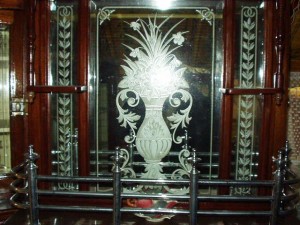
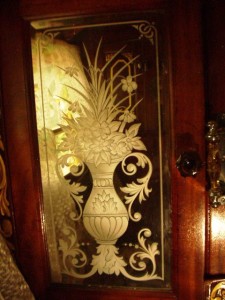
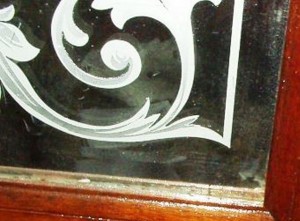
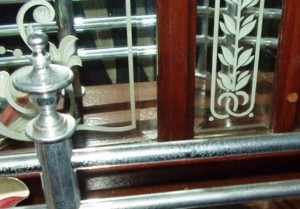
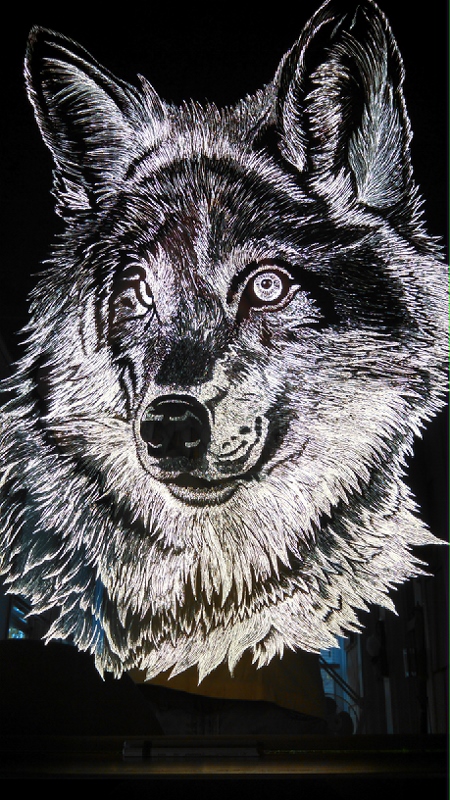
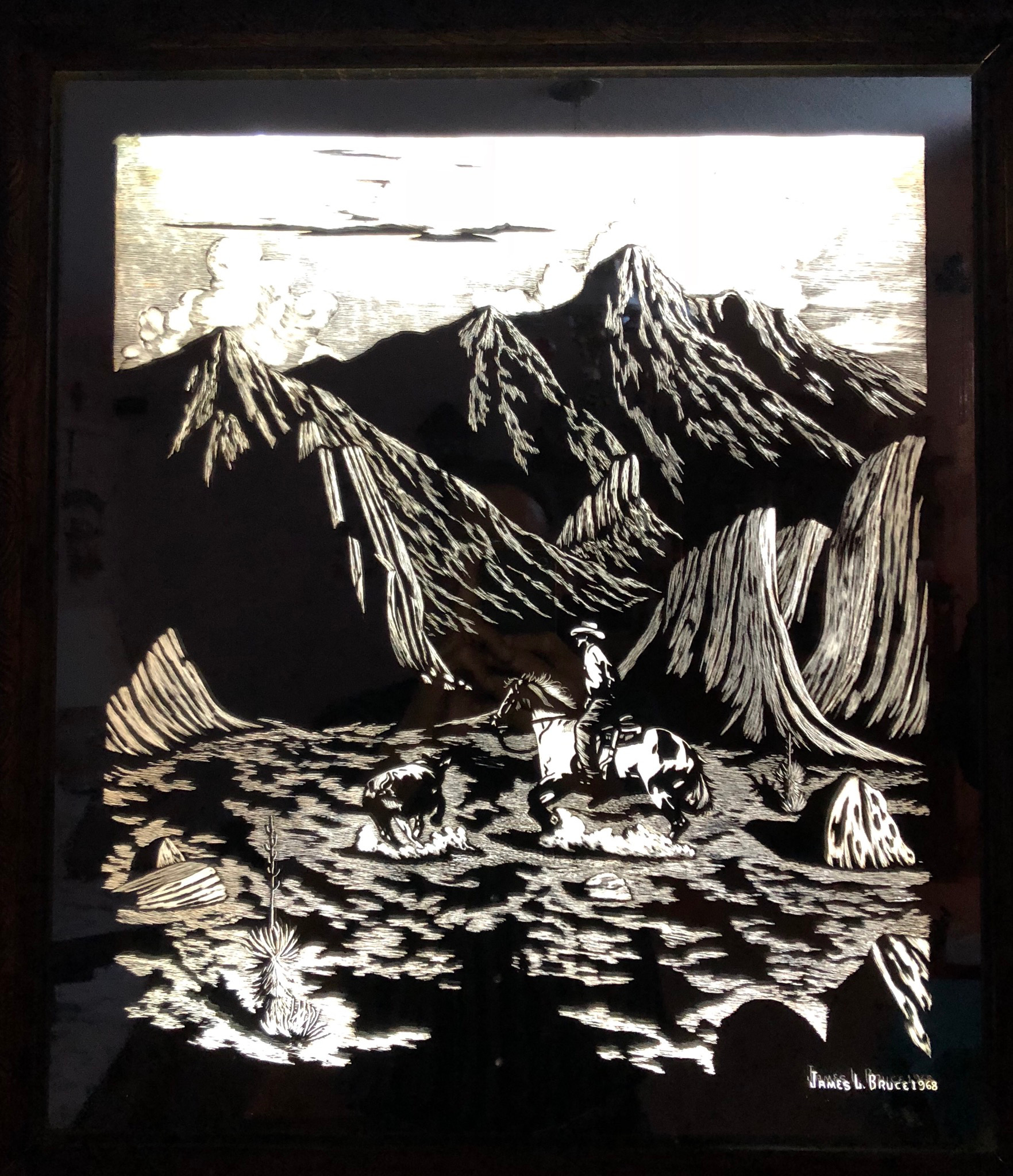
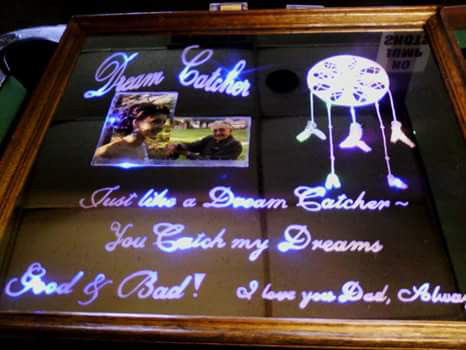
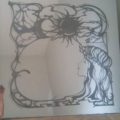
My “guess” would be to use a stencil on the back side. First I would carve with a pressure blaster not a siphon feed sandblaster a deeper cut on the frosted portions of the design. of course that would be cutting through the coating, plating and glass. Next remove the second or color shaded area of the stencil. This will take a lighter pressure to remove the backing (gray coating) and possibly a chemical etch cream on the plated area so it leaves a frosted effect. Where you deep carve it will appear white and the frosted area will give it a gray appearance. I would suggest severest samples to get the frosting technique down before actually doing the large mirror.
Don’t know how they did it by I remember as a young lad that the South African Railways had special trains running and in the Dining Saloon the mirrors were also very similar to this. Also dated back to the early 90’s.
The final product is great.
It’s hard to tell without seeing it but the line work doesn’t appear to be carved with a wheel.I’ve worked with peaces from around then,in our stained glass studio, and my guess would be an acid etch of some sort.The line and texture work was often done with a tar like product. Very nice peace it would be interesting to see the finished wagon.Building one has been a dream of mine for years.
Some really impressive work! I once saw a window in Capetown that had been sandblasted, but the interesting thing about it was that there was a pattern on one surface and the opposite? (Negative?) pattern on the other surface. This meant that the entire resist material had been used!
Regarding Terry’s comment relating to trains in South Africa, as a child traveling on trains, I can remember that ALL the windows had small sand etched buck (deer) in the centre. If memory serves, they were centered in a small circle that was about 5cm (2 inches) in diameter. Having not traveled by train for many years, I don’t know if this is still the case, .
In my humble opinion, wax resist and acid, if it’s a uniform design. Possible Wheel..but
If it’s early 1900’s forget blast, forget anything new ie; rotating tool…in/with my experience of most all different techniques, and the people that I know….consensius wax and dip, possibly several dips JMO
Harry shaboogy
Did you sand blast some of the piece?